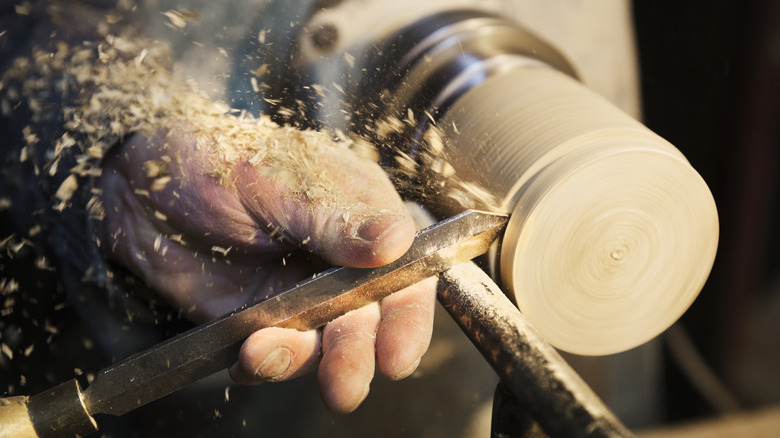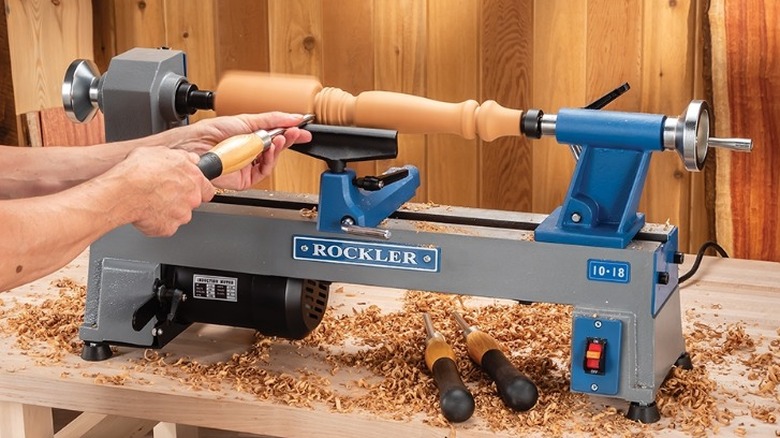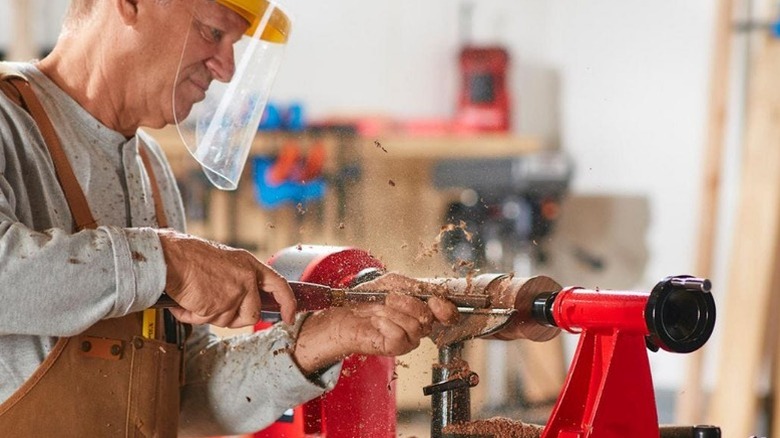Which Woodworking Machine Is Used For Turning And How Does It Work?
We may receive a commission on purchases made from links.
There are a lot of different skills and techniques that woodworkers can employ to turn raw lumber into something that is both useful and aesthetically pleasing. Most people start with projects that involve the joinery of boards, sheet goods, and other flat surfaces. The straight and curved cuts used in these kinds of projects can take you pretty far and help you develop most of the essential skills that you need for all kinds of carpentry, but you might eventually want to start making items that involve shaping wood cylindrically.
This is where wood-turning comes into play. wood-turning is a technique that is wholly different from most other methods of shaping wood, as it requires you to get familiar with another essential woodworking power tool. Rather than cutting the piece using a tool with a moving saw, you attach the wood that you wish to shape to a machine called a lathe, which actually rotates the wood itself. This allows you to approach the spinning wood with a gouge, or other shaping tool that you can use to gradually shave mass from the piece in a circular motion — similar to how you might use tools to carve grooves into clay on a pottery wheel.
Those who are curious about taking up wood-turning might want to learn a bit more about this curious machine. You may want to better understand how the device itself works, what kind of shaping gouges you can use on the wood as it spins, and what kinds of projects you can make once you have a lathe of your own.
How does a wood-turning lathe work?
There are a few different kinds of wood-turning lathes out there, but most of them have fairly similar designs. They have a solid base that supports the structure, an adjustable tailstock at one end, and a headstock that houses a rotary attachment that can vary depending on the model at the other. The headstock itself is fixed in place, but rotates the piece that actually spins the wood. Meanwhile, the tailstock can slide back and forth along the base and then lock in place, allowing you pin the wood against the headstock while simultaneously allowing it to spin freely.
Some lathes may have a metal faceplate that you screw the wood to on the headstock, while others may have a self-centering chock that clamps onto the wood, and still more models may use mandrels or jigs that are designed for smaller items and those with a more complex shape. You may also find models that allow you to swap these attachment methods. Most wood-turning lathes have several functionalities built-in, including variable speed control, forward and reverse motion, and a handwheel for adjusting the tailstock. Many of them also have an adjustable tool rest.
There are several wood-shaping tools that are designed to be used in concert with a wood-turning lathe. The roughing gouge quickly removes heavy amounts of material. This is good for getting the piece to a roughly rounded state and for setting the initial rough shape. A spindle gouge is good for detailed shaping on longer and narrower pieces. The bowl gouge is used for hollowing out basins. Parting tools cut off excess attached to the lathe at the end. Then there are scrapers and sandpaper for refining curves and smoothing the final product.
What can you make on a wood-turning lathe?
One of the most popular uses for a wood-turning lathe is for making furniture legs. Kitchen tables, cabinets, wardrobes, chairs, and any number of other pieces of furniture can all be enhanced with hand-turned, custom legs. You can also turn matching bracer bars to go between them, as well as the support bars in wooden chair backs. A similar technique to this can be used for the support bars in safety rails for second-story ledges and staircases.
Those who want to stock their kitchen cabinets can turn bowls, plates, cups, rolling pins, and even pepper mills and salt shakers. Those who want to stock their garage can turn tool handles, mallet heads, drawer knobs, and custom dowels. Then there are the more specialty items you can make. Pens, vases, jewelry, spinning tops, and chess pieces are all popular options, but the truth is that you can make nearly any object that involves cylindrical cutting.
The only real limitations are the size of the lathe and the attachment options that it comes with. Big lathes can be expensive, while mini benchtop lathes such as Wen's 8"x13" model can make a lot of smaller items, but you probably won't be turning entire table legs on it. Those looking to save a bit of money can also check out the woodworking hand tools at Harbor Freight, as they sell several wood-turning gouges.


